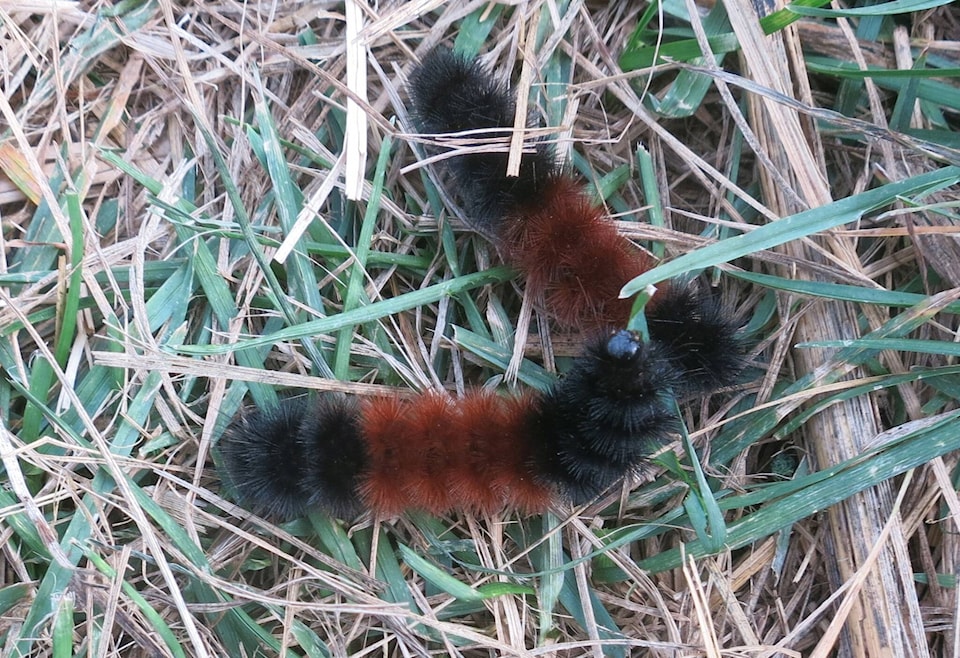By Ed McMackin, biologist by profession and naturalist by nature
It has certainly been a good fall for spotting caterpillars, especially along grassy trails through meadow habitats on West Creston flats.
The Banded Woolly Bear Caterpillar is the larva of the Isabella Tiger Moth (Pyrrharctia), which is a member of the Tiger-moth Family (Arctiidae). This group of moths somewhat stands apart from other moths in that, instead of spending the winter in the cocoon stage, they spend the winter in the caterpillar stage. It’s like they are a season behind other moth species. Either way, spending the winter in the larval stage, or in the cocoon or chrysalis stage, there is a sort of “antifreeze” that keeps the creature from death during below zero temperatures.
There is a butterfly group that hibernates as a caterpillar, often rolled up in a leaf of its food-plant. An example of this is Lorquin’s Admiral Butterfly that appears in Interior Southern B.C. in June. Like the tiger moths it comes out of hibernation and feeds for a few weeks on new leaves of its food-plant, after which it enters the chrysalis stage to emerge, in about two weeks, as an adult butterfly, or in the case of a Woolly Bear, as an adult Isabella Tiger Moth. The timing here puts the Tiger Moths and Lorquin’s Admirals appearance later in the spring in comparison to Angel-wings and Mourning Cloaks, that spend the winter as an adult.
After the Isabella Tiger Moth has mated and the females have laid eggs randomly on selected food-plants, the adults die. In late summer or early fall, caterpillars appear after completing growth, roaming about, and looking for a place to spend the winter. That wintering-place is often a small space under boards, fallen trees, rocks and woodpiles. As a caterpillar, they have a broad diet of grass, dandelions, plantains, and other greenery. They are not considered defoliators like Tent Caterpillars and Alfalfa Loopers.
So that completes a summary of the life of a Woolly Bear. Their life-history extends over the period of about a year. They are single-brooded in the Northern Temperate Zone, which includes the Kootenay region. Plants are the sustenance of every living creature, and the Kootenays comprises a vast diversity of plants. See some of this diversity on the Kootenay Lake – Creston Wildflowers Facebook page.
READ MORE: Out There: Pop Goes the Weasel
